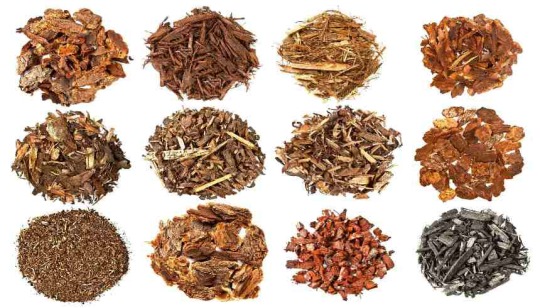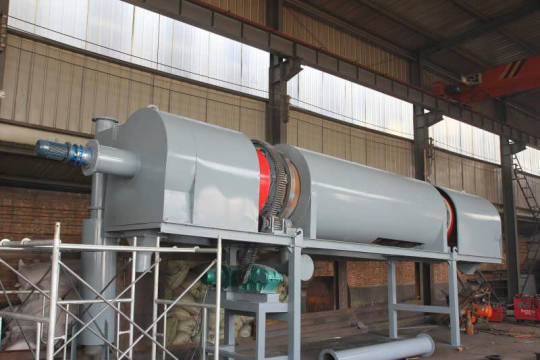Don't wanna be here? Send us removal request.
Text
How to use biomass energy efficiently?
As we know, the sun provides us with all the energy. In addition to the direct collection of solar energy used, biomass also provides us with a lot of energy.
Biomass refers to various organisms produced by photosynthesis using the atmosphere, water, land, etc., that is, all living organisms that can grow are commonly referred to as biomass. Biomass includes all plants, microorganisms, and animals that feed on plants, microorganisms, and wastes they produce. For example, straw, rice husk, palm kernel, coconut shell, and the like.

These plants use solar energy as a medium to store solar energy and are renewable energy sources. According to calculations, the energy stored in biomass is 27 billion kilowatts, which is two times larger than the current total energy consumption in the world. In the current world energy structure, biomass has a very small proportion and therefore has a very large potential for use. Biomass energy has the advantages of renewable, low pollution, wide distribution and abundant resources.
These biomass energy sources are usually directly incinerated, which results in very low energy use efficiency and generates a large number of pollutants. Therefore, it is necessary to use equipment to process biomass and convert it into an energy product that can be utilized efficiently.
The charcoal making machine is an advanced device that converts biomass into highly efficient energy production. It converts biomass feedstock into charcoal, wood vinegar, and wood tar by dry distillation and anaerobic carbonization. The MoreGreen charcoal making machine uses the most advanced high-temperature and high-pressure carbonization technology, which can recycle the combustible gas and high-temperature exhaust gas generated in the carbonization process to dry and heat the biomass raw materials, greatly saving the fuel required for the carbonization reaction.

Due to geographical conditions, biomass feedstocks are more abundant in some countries in Southeast Asia and Africa. Like Indonesia, the Philippines, and Thailand, they produce large amounts of waste biomass such as coconut shells, palm kernels, and rice husks every year. At present, these countries do not seem to realize that these biomass can be converted into high-value biomass fuels. Most of these biomass wastes are landfilled or directly incinerated, causing energy waste and polluting the environment.
Charcoal, one of the final products of biomass carbonization, is widely used in the world. The demand is huge and the price is high. Therefore, the procurement of charcoal making machines can process biomass that can be obtained almost free of charge into charcoal, which can not only dispose of the waste but also obtain high profits, killing two birds with one stone.
0 notes
Text
5 LED Growth Light Packaging Technologies
There are more than 30 types of LED plant growth lighting integrated packaging structures, which are gradually moving toward system integration packaging, which is the development direction of future packaging technology.
Here are five mainstream LED grow lights packaging technologies from Kenyon.
1、LED Plant Growth Lamp Wafer Level Package
Wafer-level packaging from epitaxial LED devices requires only one dicing, which is a multi-system integrated package required for LED illumination sources. Generally, the substrate is made of silicon material, which does not require die bonding and pressure bonding, and is formed by dispensing to form a system integrated package. The advantage is that the reliability is good and the cost is low, which is one of the development directions of the packaging technology.
2、COB Integrated Package
The COB integrated package has more than 30 kinds of package structures such as MCOB, COMB, MOFB and MLCOB. The COB packaging technology is becoming more and more mature, and its advantage is low cost. The COB package now accounts for about 40% of the LED light source, with a luminous efficacy of 160 to 178 lm/w and a thermal resistance of 2 °C/w. If you want to know some high-quality COB LED grow lights, please click here. COB packaging is the trend of recent LED packaging development.
3、COF Integrated Package
The COF integrated package is a large-area assembled medium-power LED plant growth lamp chip on a flexible substrate. It has the advantages of high thermal conductivity, thin layer flexibility, low cost, uniform light emission, high light efficiency, and flexibility, and can provide line light source, surface light source and Three-dimensional light source. This technology can also meet the requirements of LED modern lighting, personalized lighting, and can also be used as a general-purpose package component, with a very good market prospect.
4、LED Plant Grow Light Modular Integrated Package
The modular integrated package generally refers to the system integration and packaging of the LED chip, the driving power supply, the control part, the parts, etc., collectively referred to as the LED module, which has the advantages of material saving, cost reduction, standard production, and convenient maintenance.
5、Flip Chip Packaging Technology
The flip-chip packaging technology forms a space from the chip, the substrate and the bump, so that the packaged chip has the advantages of small volume, high performance, short connection, etc., using ceramic substrate, flip chip, eutectic process, direct pressure Meet to achieve high power lighting performance requirements. The LED grow light made by this technology has excellent electrical conductivity and thermal conductivity.
1 note
·
View note